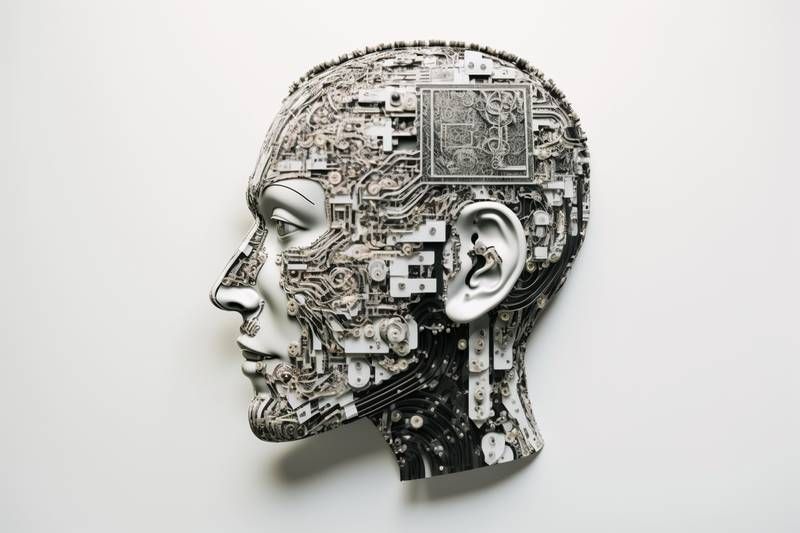Artificial Intelligence has become one of the most discussed technologies in recent years. With its ability to learn and continuously improve its performance, AI is revolutionizing the world of work.
However, one of the main concerns for consumers and businesses is the cost of implementing AI. In this article, we will explore the different factors that influence the cost of AI and how companies can balance costs with benefits.
Before diving into the analysis, it is important to understand how an AI model is created in order to identify where the costs lie.
How to Create and Use Artificial Intelligence from Scratch
Creating an AI from scratch requires a complex and costly process that involves the use of advanced technologies such as machine learning and deep learning.
The process is as follows, and each step incurs costs:
- Collecting large amounts of data
- Data classification to make it usable by the learning algorithm
- Design and development of the machine learning model, which will then be trained on the collected and classified data
- Training and managing the model with data until it achieves satisfactory results
- Implementation and deployment of the model with its functionalities for use
- Integration with new or existing programs
The costs to budget for include:
- High-end hardware as the operations involved require parallel computing and are numerous
- Data analysts for all data-related tasks
- Machine learning experts for model development
- Software development companies for user interface implementation and integration with other software
These costs are all to be budgeted for only when the model is created from scratch, and the cost can be quite high. For example, OpenAI has spent millions of dollars to train its most famous model, GPT-4.
A realistic cost for a small to medium-sized business can range from 50,000 to 100,000 euros to create a minimal and functional version.
Cost Savings by Using Existing Models
If you are a company looking to adopt Artificial Intelligence without spending a fortune, we suggest using existing models. There are many available, some free and others paid.
In particular, you should ask yourself the following questions for each type of model:
Do I need to further train the model?
If the answer is yes, the cost would clearly increase as you would need to pay for data analysts, machine learning experts, and hardware in order to modify the system.
What hardware does the model require?
The required hardware varies greatly, and therefore it needs to be either purchased, rented, or none of the above if the service does not allow usage outside of its ecosystem.
In practical terms, here are some example scenarios:
- Text recognition systems in images require minimal hardware performance, so they can run on any computer. Cost: 0
- Generating images or large blocks of text requires high-performance hardware. Cost: 1,000-3,000 euros (or much more for complex operations)
- With proprietary systems, the cost can be zero as the model cannot be installed on your own devices but only used on-demand. Cost: 0
Is the model open-source or paid?
The AI model can be open-source or paid, depending on the manufacturer and the features offered. Generally, an open-source model is free and can be used by anyone at no cost.
However, these models may have some limitations, such as lack of technical support or advanced features.
The cost of these models depends on the required features and the size of the dataset used to train the model. In general, paid models can cost from a few cents per single use to thousands of euros per month, depending on the needs.
Here are some links for the costs of some of the main consumption-based platforms:
How does the model integrate with existing business systems?
Artificial Intelligence represents a unique opportunity for companies to improve their efficiency and productivity. However, to make the most of it, it is necessary to integrate the AI model efficiently and flexibly with existing business systems.
To do this, it is essential to involve development teams that will integrate the necessary AI model into the existing ecosystems.
Real Cost Cases
To make things easier, let's consider some real situations and analyze the costs:
BloggerAI
This project involves integrating artificial intelligence into a blog article editor (I'm using it right now 😁), specifically using models from OpenAI.
In particular, considering the implementation hours of the part involving artificial intelligence, the cost is around 4,000-5,000 euros. No additional costs need to be added except for the payment of the on-demand model, which amounts to a few cents per article (to give you an idea, writing this article cost 1 cent).
Click here for more information about BloggerAI

Generating Photos for Recipe Books
For a project, it was necessary to develop a small interface that could generate ultra-realistic photos of dishes for recipe books. The model used was the open-source Stable-diffusion.
The usage costs of the model are zero as it is open-source and was installed directly on the client's computer. However, in order for it to work, configuration and the purchase of some graphics cards were necessary. The overall cost estimate for hardware and consulting was limited to 2,000 euros.
(Click here to read our complete guide on artificial intelligence for businesses)
